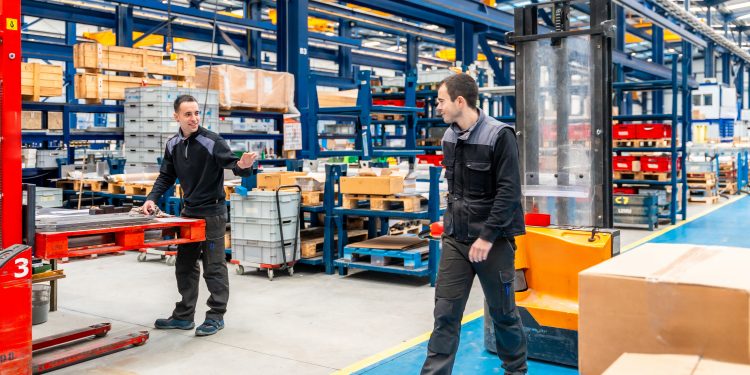Warehouse Worker Retention: How Automation Reduces Turnover

Retention and Turnover Challenges in Warehousing
Warehouse worker turnover and the shortage of qualified candidates are not new, but they continue to be one of the hardest challenges for warehouse operators. According to the Bureau of Labor Statistics, warehouses face a high employee turnover rate compared to many industries.
Workers often leave for a small pay increase. Many warehouses see employees start one week and quit the next, leaving teams scrambling to keep up with productivity. Temporary workers can fill some gaps, but they raise costs and bring less consistency. For operations dealing with these issues, warehouse automation offers a practical solution.
How Warehouse Automation Supports Retention
In manual warehouse settings, employees do long hours of heavy physical work with little job satisfaction. Younger, tech-focused workers, in particular, want roles that include technology and better work-life balance.
Automation addresses this problem. For example, warehouses that added autonomous mobile robots (AMRs) to support picking tasks saw an immediate drop in worker turnover. Employees no longer had to take on the most repetitive or tiring jobs. Instead, they could focus on more engaging tasks, which raised employee engagement and job satisfaction.
By improving the work environment, automation helps reduce employee turnover and boost retention rates, even when other employers offer slightly higher wages.
Efficiency Gains from Higher Retention
When warehouse worker retention improves, efficiency follows. Automation allows warehouses to complete more work with fewer people, and stable, engaged teams make those gains even stronger.
One company that added AMRs to its order fulfillment process saw productivity rise by 200 percent. With fewer workers needed for repetitive picking, the company redirected staff to more engaging roles, raised wages, and reduced turnover at the same time.
Safer, More Engaging Work Environments
Automated systems improve efficiency and create safer warehouse environments. Robots perform heavy lifting and repetitive movement, reducing the risk of accidents. Employees spend less time pushing carts, lifting loads, or walking the floor. This improves safety, lowers fatigue, and helps create work environments in which employees want to stay.
Automation also gives workers valuable skills. Experience with warehouse technology adds credibility to their resumes and prepares them for development opportunities in other parts of the supply chain.
Faster Training and Onboarding
Automation also helps train new workers faster. In a manual warehouse, it can take a week for a new employee to become productive. With automation, such as goods-to-person systems, new hires can be trained in about an hour.
This reduces onboarding time, minimizes disruption, and helps employees succeed quickly. Faster success improves confidence, increases retention, and lowers the risk of high turnover rates.
Automation as a Retention Strategy
High employee turnover continues to challenge warehouses, but automation provides a clear path forward. By reducing physical strain, increasing job satisfaction, and creating safer, more efficient warehouse environments, automation helps companies improve retention rates while boosting efficiency.
For warehouse operators facing constant turnover, automation is not only about productivity. It is a proven strategy for building stronger teams, lowering costs, and improving service across the supply chain.
For more information about the Solutions Community: mhi.org/solutionscommunity
For further articles from the Solutions Community:
Post-Installation Training for Warehouse Automation
What Are the Benefits of Supply Chain Towers?
Types of Automation Integrators
Should You Consider Warehouse Automation?
How WES Supports Warehouse Automation Goals
What is CMMS? Usage-Based Maintenance for Modern Warehouses
All You Need to Know About Yard Management Systems (YMS)
How to Implement Automation in Brownfield Facilities Without Disrupting Operations



